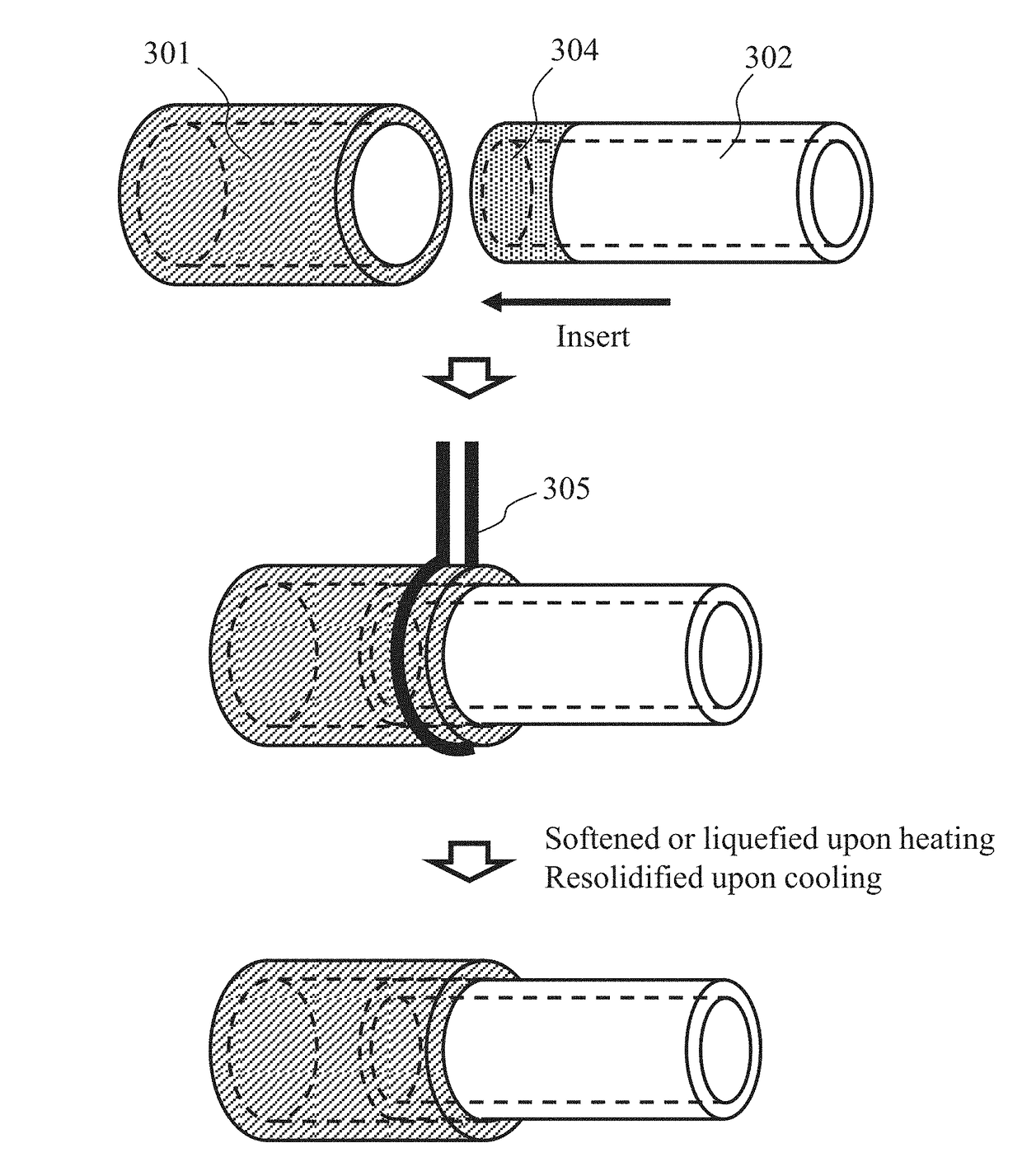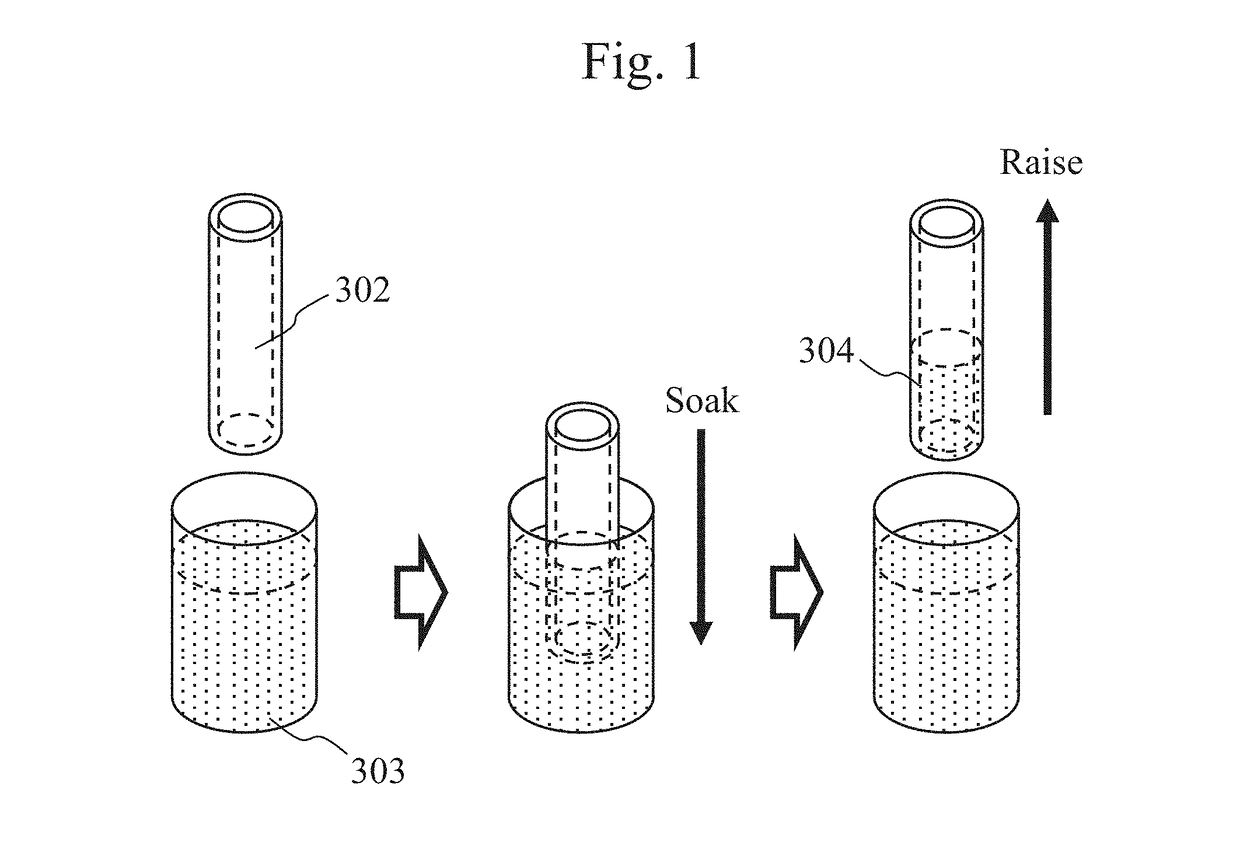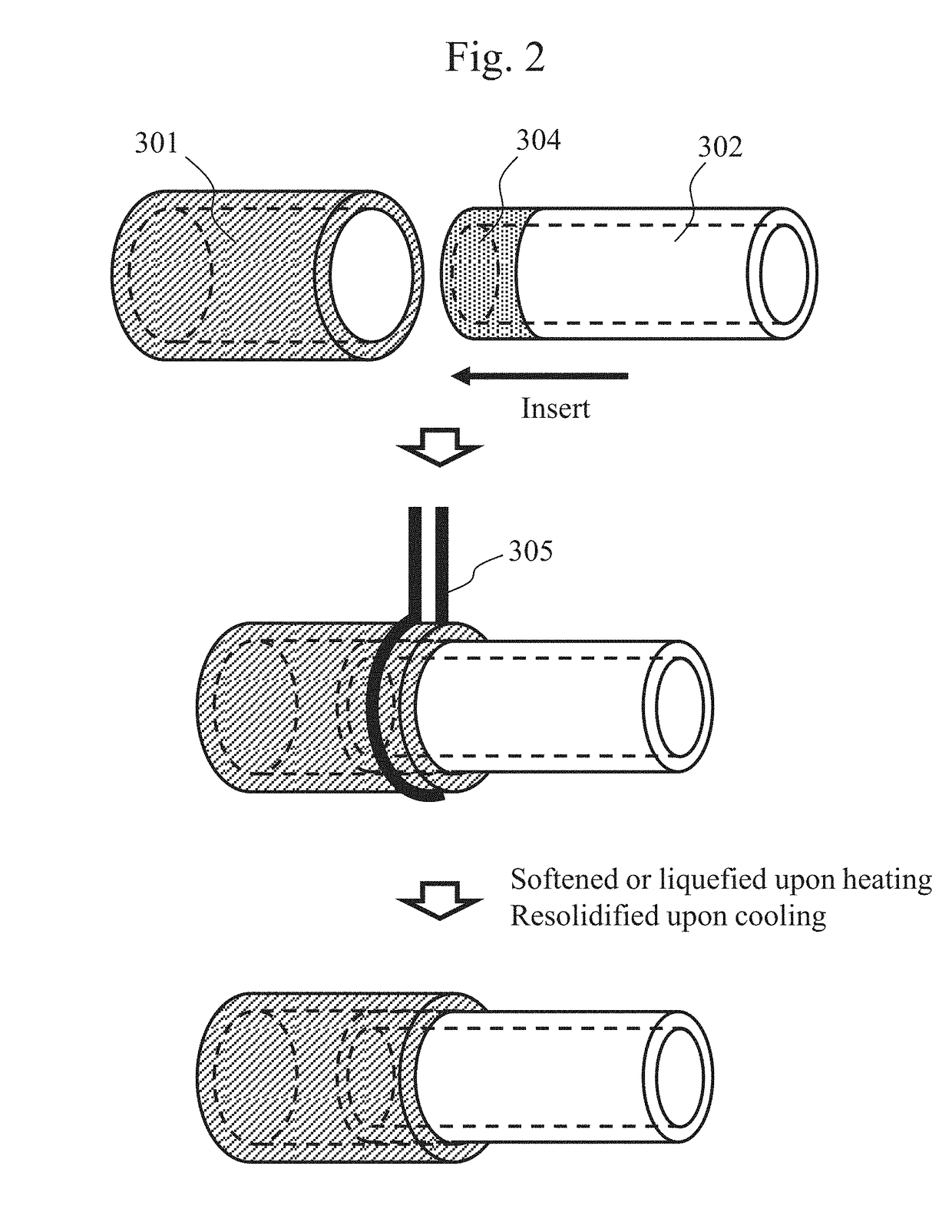Glass/resin composite structure and method for manufacturing same
a composite structure and resin technology, applied in the field of glass/resin composite structure and method for manufacturing same, can solve the problems of inability to produce a high-pressure resistance composite structure that would be suitable, the chemical resistance of the entire composite structure to deteriorate, and the inability to utilize polyether ether ketone resin, etc., to achieve the effect of improving the adhesion between the silica glass and the super enpla, improving the friction between the silica glass and the super
- Summary
- Abstract
- Description
- Claims
- Application Information
AI Technical Summary
Benefits of technology
Problems solved by technology
Method used
Image
Examples
Embodiment Construction
[0043]Hereafter, embodiments of the present invention are described with reference to the drawings.
[0044]In the method of production according to the present invention, a silica glass substrate may be a compound mainly composed of silicon that can chemically bind to a hydrolyzable silicon compound. Preferable examples include synthetic silica glass, fused-silica glass, borosilicate glass, and soda glass having excellent light permeability. According to the present invention, a super enpla substrate is composed of a material having low affinity with silica glass in a softened or liquefied state; that is, a material exhibiting high surface tension between the silica glass and the super enpla. Polyallyl ether ketone-based resins, and, typically, polyether ether ketone resin, polyether ketone resin, polyether ketone ketone resin, polyether nitrile resin, and other resins are preferable. Polysulfone-based resins, such as polysulfone resin, polyphenylene sulfide resin, polyether sulfone r...
PUM
| Property | Measurement | Unit |
|---|---|---|
| temperature | aaaaa | aaaaa |
| angle | aaaaa | aaaaa |
| temperature | aaaaa | aaaaa |
Abstract
Description
Claims
Application Information
 Login to View More
Login to View More - R&D
- Intellectual Property
- Life Sciences
- Materials
- Tech Scout
- Unparalleled Data Quality
- Higher Quality Content
- 60% Fewer Hallucinations
Browse by: Latest US Patents, China's latest patents, Technical Efficacy Thesaurus, Application Domain, Technology Topic, Popular Technical Reports.
© 2025 PatSnap. All rights reserved.Legal|Privacy policy|Modern Slavery Act Transparency Statement|Sitemap|About US| Contact US: help@patsnap.com



